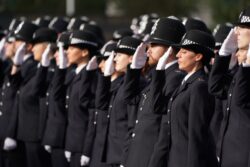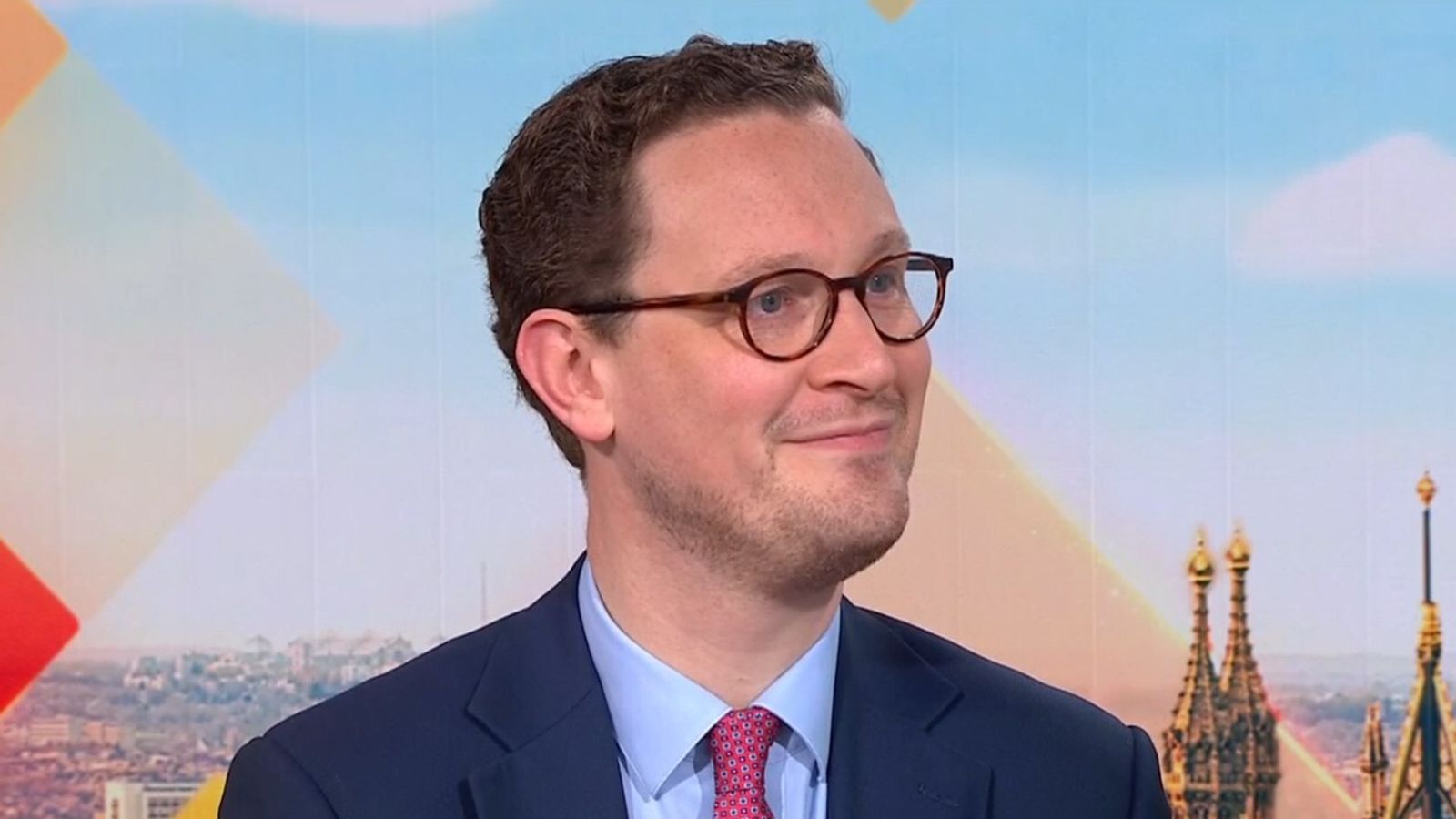After cutting around 20,000 police officers, the Tories have recruited 20,000 officers (Picture: PA)
The government has hired enough police officers to bring it back to the numbers it was before the Tories came to power.
Though, the number of Metropolitan Police officers isn’t quite as high as the government had hoped.
In 2008, police numbers were at a national high with more than 160,000 in the force.
But as the Tories tightened the public purse, police budgets were cut and the number of officers (especially constables) fell.
According to Home Office data in March 2010, there were around 143,000 police officers on the payroll across England and Wales’ 43 police forces.
By March 2016, that figure had fallen once again by 20,000 to 124,066. Five years later, it was on the cusp of 2010 levels at 140,228.
The government revealed today it has fulfilled a 2019 manifesto pledge to boost police numbers and has hired 20,951 more officers, bringing the provisional cop headcount to 149,572.
Suella Braverman, the home secretary, said the new hires will help ‘prevent violence’ (Picture: PA)
Rishi Sunak fulfilled a manifesto pledge set by Boris Johnson to recruit more officers (Picture: PA)
Prime Minister Rishi Sunak tweeted: ‘In 2019, we promised to recruit 20,000 additional police officers in England and Wales to make our streets safer and protect communities.
‘Today, I’m pleased to say we have delivered that promise.’
Home secretary Suella Braverman added in a tweet: ‘We have delivered on the promise we made to the British people and put more police on the beat to prevent violence, solve more burglaries and crack down on antisocial behaviour.’
But out of the 43 forces, the Metropolitan Police was the only one to miss its individual target, Home Office statisticians found.
It was tasked with hiring 4,557 new officers London’s force provisionally recruited only 3,468.
Opposition politicians and experts stressed that voters shouldn’t be ‘fooled’ by the police increase, however.
Labour shadow home secretary Yvette Cooper said: ‘The Tories cut 20,000 officers. Then set a target to patch up their own cuts.
‘Now they want us to be grateful! Even though we still don’t see police on the beat (6,000 police cut from neighbourhood teams) and population’s grown since 2010.
‘They are taking (the) country for fools.’
Law enforcement commentator Danny Shaw tweeted how the way the government has tallied the number of police officers is slightly different than usual.
In usual police workforce reports, the number of officers is shown in terms of full-time equivalent employment (FTE) and headcount.
But in the government’s updates to its ‘police uplift’ drive, the numbers are instead presented just as a headcount, Shaw said.
The Home Office says headcount is the ‘most-appropriate way to measure and track the recruitment processes which relate to individuals (for example, applications, vetting, assessment centres)’.
The Metropolitan Police failed to meet its recruitment target, however (Picture: AFP)
For headcount, one officer is counted as one. But FTE is a more specific way of counting a workforce, where the hours clocked in are counted instead.
So one police officer working full-time and another working part-time would count as 1.5, the Home Office said.
In the most recent police data released in September 2022, the police headcount was 144,345, whereas the FTE count figure was 2,200 less.
‘It’s the police replacement for officers who quit after @UKHomeOffice cut force budgets from 2010,’ Shaw said.
‘Uplift/replacement is calculated by net “headcount” increase of officers (different from FTE). By end of Dec 2022, headcount increase was 16,753, that’s 3,247 short of 20,000 target.
‘So, how have @UKHomeOffice and forces recruited those 3,247 officers since December?’
Shaw pointed to how some forces have ‘fast-tracked officers to ensure they’re in post by March 31’, with retiring officers ‘encouraged’ to stay on.
‘Candidates who failed to get in have been asked to re-apply, so they’re in by March 31,’ he said, adding that officials say this was to ‘simplify’ the process.
‘Nothing illegal has gone on. Just a bit of rule-bending,’ Shaw said, ‘all so @UKHomeOffice can avoid the political embarrassment of missing its target.’
The number of police officers in the UK has long been the subject of debate among policy-makers, pundits and the public alike.
It can depend a lot on how the number is counted, such as whether it’s just officers serving on the front line or whether officers of various ranks, support staff, traffic wardens and more are also included.
The way police numbers are counted can depend on who is counted and what the best way to count it is (Picture: Getty Images Europe)
How many officers are on the streets is decided by local Police and Crime Commissioners, though central government funding for the police has been cut under the Tories, according to the Institute for Fiscal Studies.
‘@UKHomeOffice may have finally reversed – numerically – the cuts to officer numbers from 2010 to 2017,’ Shaw said.
‘But the impact of those cuts will be felt for many years to come.’
Get in touch with our news team by emailing us at [email protected].
For more stories like this, check our news page.
‘The Tories cut 20,000 officers. Then set a target to patch up their own cuts.’





